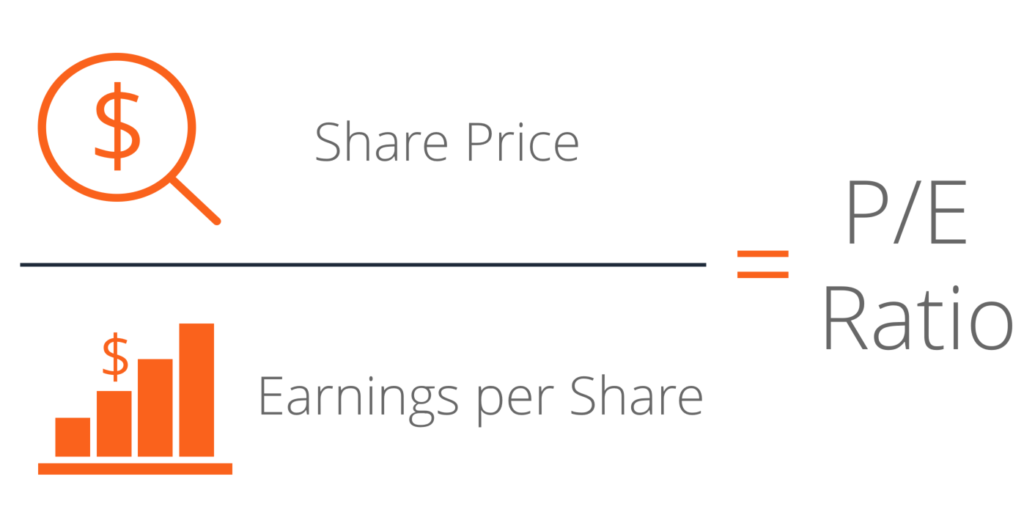As you may have guessed from the title, this posting is about the Price to Earnings Ratio (P/E). P/E is one of the most common fundamental and quick ways to determine if a stock is relatively cheap or relatively expensive.

Two Ratios
There are really two P/E ratios: One that looks backward at previously-announced earnings, and one that looks forward at earnings projected by analysts. If the company’s earnings are rising, the backward P/E will be a larger number than will the forward P/E.
WTF
Let’s take an example of a company I will call the WTF Company (because ABC is already taken by AmerisourceBergen). WTF trades at $50/share and announced earnings of $0.625/share in the last quarter. $0.625 times 4 is $2.50, and $2.50 times 20 is $50, so WTF is trading at 20 times earnings, or at a P/E of 20. Always remember to take the latest quarterly earnings and multiply by 4 to get the annual earnings, unless it is a seasonal business such as retail and you are looking at the Christmas quarter, so you have to smooth out the earnings. But I’m getting beyond my point. My point is, let’s say WTF’s earnings are projected to grow by 10%. This means next quarter they should earn $0.6875, which, times 4, is $2.75 per share annualized. What does that mean for the P/E? It means the forward P/E at $50/share is 18.18. That doesn’t look as high as 20, and maybe you can feel comfortable buying a stock with a n 18 P/E where you wouldn’t feel comfortable at 20. Remember, you buy a stock for the company’s future earnings, and while their past earnings can tell you something about how well the company is run and what you might expect for the future, you should be looking to the future more than the past.
IMO
The next time you have a conversation with someone about stocks and they mention the P/E ratio, ask them if they are talking about backward or forward P/E. Chances are if they think stocks are priced too high and that we are about to have a downfall, they are talking about backward P/E. However, if they are looking for reasons to buy stocks, chances are they are talking about forward P/E. When you hear or read the term “P/E”, the default meaning is backward P/E. However, investors tend to look forward. In an era such as this when corporate profits are rising significantly, there is going to be a disconnect wherein adherents of P/E and metrics such as the Schiller CAPE Ratio (another expression of backward P/E) will be sounding the warning sirens. If the forward P/E is more in line and you believe there is a good chance companies will meet or exceed their profit projections, then you don’t need to take cover when the sirens sound.
